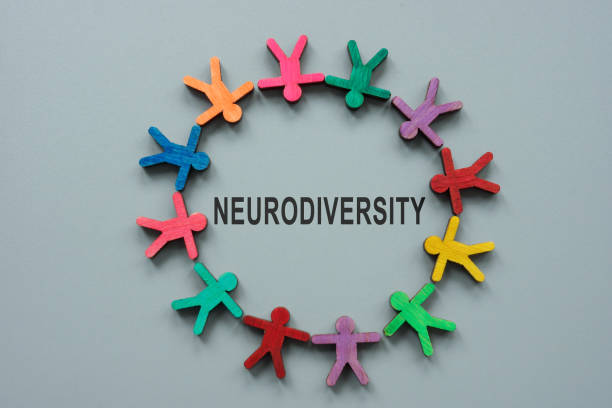Introduction
Dyslexia is often viewed through a lens of challenges, but many organizations are beginning to recognize the significant advantages of employing dyslexic individuals. When properly supported, employees with dyslexia can offer unique perspectives, creative problem-solving skills, and innovative thinking that are invaluable assets in today’s competitive workplace.
In this blog, we explore how embracing neurodiversity, including dyslexia, can benefit organizations by unlocking untapped potential and fostering a culture of inclusivity.
What is Neurodiversity?
Neurodiversity refers to the concept that neurological differences, such as dyslexia, ADHD, and autism, are natural variations of the human brain. This perspective challenges traditional views of disability, advocating for a more inclusive approach that recognizes the strengths and abilities of neurodiverse individuals.
Dyslexia, specifically, is often associated with challenges in reading and writing, but many dyslexic individuals excel in areas such as:
- Creative thinking
- Big-picture problem solving
- Strategic decision making
- Strong verbal communication

By embracing neurodiversity, organizations create environments where these strengths are valued and utilized to their fullest potential.
How Dyslexia Can Be an Asset in the Workplace
1. Creative Problem Solving
Many dyslexic individuals are known for their out-of-the-box thinking. Their brains are wired to approach problems from different angles, often leading to innovative solutions that others might overlook. This creativity is particularly valuable in industries such as marketing, product development, and design.
2. Strength in Visual and Spatial Thinking
Dyslexic employees often excel in tasks requiring visual-spatial intelligence. Whether it’s reading blueprints, interpreting complex data visualizations, or developing creative concepts, their ability to think in 3D and grasp patterns makes them invaluable assets in roles that require visual problem-solving.
3. Resilience and Adaptability
Overcoming the daily challenges of dyslexia fosters resilience. Dyslexic individuals often develop strong coping mechanisms and the ability to adapt to various situations. This trait is essential in fast-paced work environments, where agility and the ability to adjust to new challenges are critical.
4. Enhanced Verbal Communication Skills
While dyslexia may pose challenges in reading and writing, many dyslexic individuals are excellent verbal communicators. They often excel in brainstorming sessions, presentations, and client interactions, using their strong verbal skills to convey complex ideas effectively.
Creating a Neurodiverse-Friendly Workplace
Step 1: Promote Awareness and Understanding
One of the first steps in creating a neurodiverse-friendly workplace is raising awareness. Educating employees about the value of neurodiversity can help eliminate misconceptions and reduce stigma. This can be achieved through:
- Workshops and training sessions
- Guest speakers or testimonials from employees with dyslexia
- Providing resources like articles and videos on the benefits of neurodiversity
Encourage managers to read “Training Managers to Support Dyslexic Employees: A Step-by-Step Guide” for further insights.
Step 2: Implement Supportive Policies
Ensure that policies support neurodiverse employees by offering accommodations such as:
- Flexible work hours or remote work options
- Access to assistive technology
- A supportive performance management system that focuses on strengths
Step 3: Encourage Collaborative Work Environments
Encourage teamwork and collaboration, where neurodiverse employees can thrive by leveraging their unique perspectives. Working in diverse teams often leads to creative solutions and innovations, which benefit the entire organization.
Real-Life Success Stories: Dyslexia as an Asset
Case Study 1: The Marketing Team That Thinks Differently
A leading marketing agency hired several dyslexic employees, recognizing their ability to think creatively and challenge conventional strategies. The diverse team redefined branding approaches and developed innovative ad campaigns, leading to increased market share.
Case Study 2: The Design Firm that Embraces Spatial Intelligence
A design firm leveraged the visual-spatial strengths of their dyslexic employees, resulting in groundbreaking architectural designs and 3D modeling projects that set the company apart from competitors.
The Business Case for Embracing Neurodiversity
By embracing neurodiversity, companies gain access to a talent pool that brings creativity, innovation, and resilience to the table. Research shows that organizations that champion diversity and inclusion benefit from:
- Increased creativity and problem-solving: A diverse team offers a wider range of ideas and solutions.
- Higher employee satisfaction and retention: Employees who feel supported and valued are more likely to stay and contribute long-term.
- Improved company reputation: Companies known for their inclusive hiring practices attract top talent and improve their public image.
Conclusion
Dyslexia, when viewed through the lens of neurodiversity, becomes a valuable asset rather than a challenge. By embracing the strengths of dyslexic employees and providing the necessary support, organizations can create a more inclusive, innovative, and successful workplace.
Call to Action
Interested in learning how to support dyslexic employees and leverage neurodiversity? Read “Assistive Technology for Employees with Dyslexia: Tools That Make a Difference” for actionable tips on integrating the right tools into your workplace.
featured image by istockphoto.com


